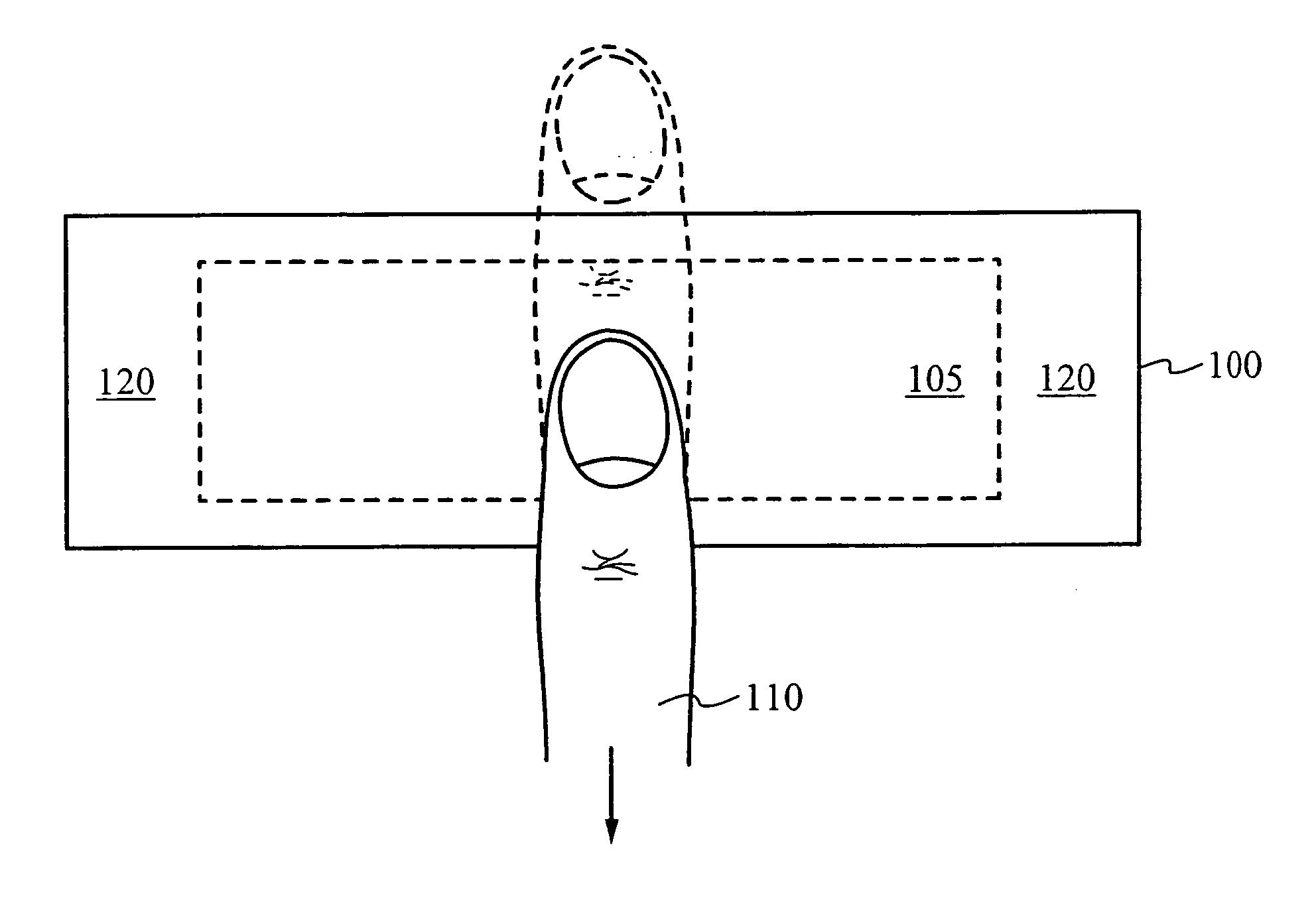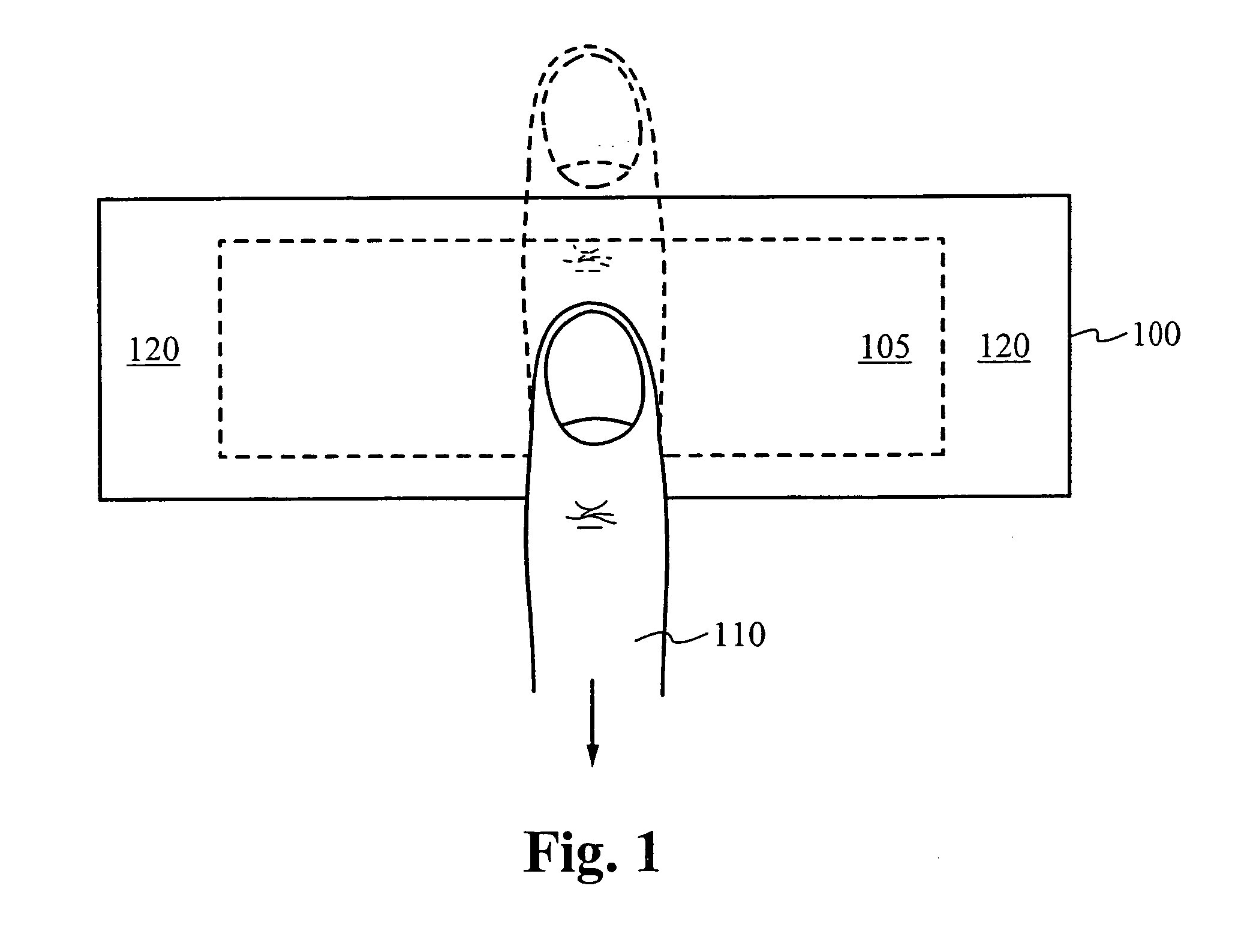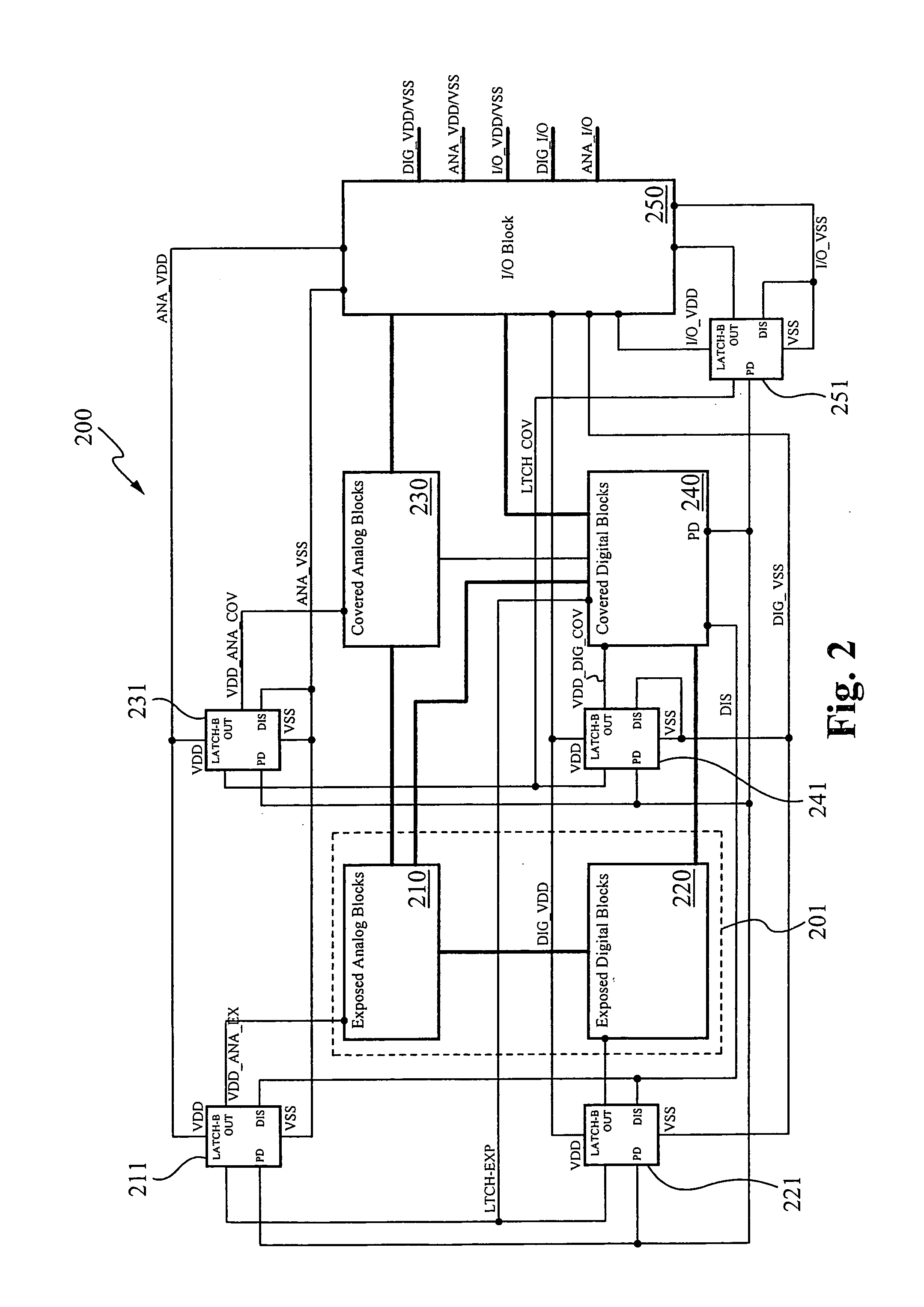System for and method of protecting an integrated circuit from over currents
a technology of integrated circuits and protection methods, applied in the field of contact detectors, can solve problems such as excessive current draw, damage to the functional disconnect of contact detectors, and the inability to maintain the function of contact detectors, so as to avoid overcurrent draw, and leave more contact detectors for subsequent operation
- Summary
- Abstract
- Description
- Claims
- Application Information
AI Technical Summary
Benefits of technology
Problems solved by technology
Method used
Image
Examples
Embodiment Construction
[0027] The present invention is directed to protecting contact detectors that have exposed portions, such as the portion of a finger sensor used to capture finger images. These portions are exposed in that they are contacted to capture image data or other data and thus contain or overlie electronics used to process the image or other data. Because these portions come into contact with fingers and materials that can carry electrostatic charges, these portions are necessarily vulnerable to latch-up, which can result in the generation of excessive current that can damage the integrated circuits that form the contact detector. The portions are also susceptible to mechanical and other damage. While much of the discussion that follows focuses on finger image sensors, it will be appreciated that other contact detectors and other types of integrated circuits are able to benefit from the present invention.
[0028]FIG. 1 shows a finger 110 being swiped along a finger swipe sensor 100 in accord...
PUM
 Login to View More
Login to View More Abstract
Description
Claims
Application Information
 Login to View More
Login to View More - R&D
- Intellectual Property
- Life Sciences
- Materials
- Tech Scout
- Unparalleled Data Quality
- Higher Quality Content
- 60% Fewer Hallucinations
Browse by: Latest US Patents, China's latest patents, Technical Efficacy Thesaurus, Application Domain, Technology Topic, Popular Technical Reports.
© 2025 PatSnap. All rights reserved.Legal|Privacy policy|Modern Slavery Act Transparency Statement|Sitemap|About US| Contact US: help@patsnap.com



